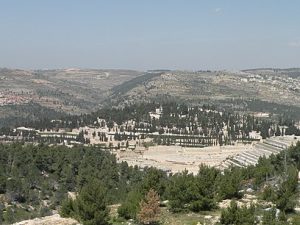
Nestled in the heart of Jerusalem, Har HaMenuchot stands as a silent witness to the rich tapestry of history that has shaped the region for centuries. This sacred burial ground, also known as the “Mount of Rest,” holds a profound significance in the cultural and religious heritage of Israel. Let’s embark on a journey through time to explore the history of burial in Har HaMenuchot.
Early History:
Har HaMenuchot’s history is deeply intertwined with the historical and religious narratives of Jerusalem. The site’s significance dates back to ancient times when the city was a focal point for various civilizations. From the Canaanites to the Israelites, the land around Jerusalem has been a place of spiritual reverence and final repose.
Roman and Byzantine Periods:
As centuries passed, Jerusalem witnessed the rise and fall of empires. During the Roman and Byzantine periods, the city became a melting pot of cultures and religions. Burial practices evolved, and various burial sites emerged in and around Jerusalem. The reverence for the deceased and the belief in an afterlife were integral components of these ancient burial traditions.
Medieval Period:
The medieval period brought a new layer of history to Har HaMenuchot. As Jerusalem changed hands between Islamic and Christian rulers, burial practices adapted to the prevailing religious and cultural norms. The sacred nature of the land persisted, and the hills of Har HaMenuchot continued to be a site of spiritual significance.
Ottoman Rule:
With the Ottoman Empire’s dominance in the region from the 16th to the early 20th century, Jerusalem underwent transformations in its social and architectural landscape. During this time, cemeteries like Har HaMenuchot continued to serve as sacred grounds for the diverse communities residing in Jerusalem.
Modern Era:
The 20th century brought significant changes to the region, with the establishment of the State of Israel in 1948. Jerusalem became a focal point for religious and national identity, and Har HaMenuchot continued to be an essential burial ground for Jewish communities.
Har HaMenuchot Today:
Today, Har HaMenuchot stands as a vast and serene burial ground, echoing centuries of history within its boundaries. It is a final resting place for people from various backgrounds, reflecting the diversity of Israeli society. The cemetery is organized into sections, accommodating different religious denominations and family plots.
The landscape of Har HaMenuchot is adorned with tombstones that tell stories of lives lived and journeys completed. Visitors to this sacred mount experience not only a connection to their own heritage but also a profound sense of unity with the tapestry of human history that has unfolded in Jerusalem.
Conclusion:
Har HaMenuchot’s history is a testament to the enduring significance of Jerusalem as a spiritual and cultural center. From ancient civilizations to the present day, the mount has served as a sacred space for those who have passed away, leaving an indelible mark on the land’s narrative. As we explore the history of burial in Har HaMenuchot, we discover a thread that weaves through time, connecting generations and honoring the lives that have shaped the remarkable story of this sacred place.

